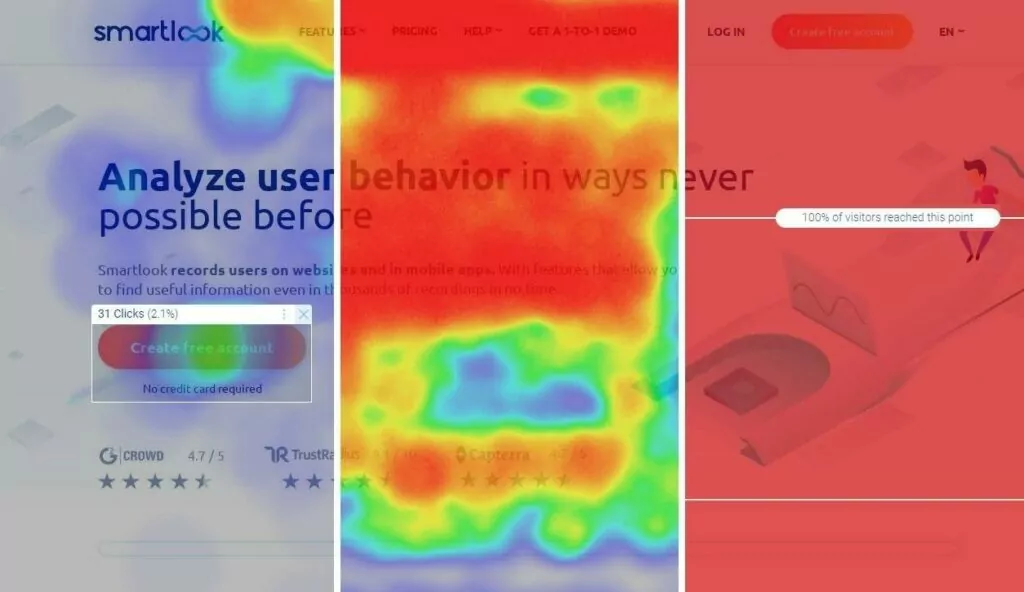
How to Use Heatmaps to Analyze User Behavior
FastCreaSite – Understanding how people interact with your website is essential for improving performance, and website heatmap user behavior is one of the most Heatmaps powerful tools to achieve that. Modern analytics can feel overwhelming, but website heatmap user behavior gives a visual, intuitive way to track where visitors click, move, or scroll. Businesses that rely on website heatmap user behavior can quickly discover what users actually care about instead of guessing. Many UX designers and marketers use website heatmap user behavior to improve layout and conversion rates. Because website heatmap user behavior highlights real engagement patterns, decisions become data-driven. Anyone building a website should explore website heatmap user behavior early, not after losing users. By integrating website heatmap user behavior into every design iteration, performance continually improves. That is why website heatmap user behavior is now a must-have tool for digital growth.
Most website analytics provide numbers, but website heatmap user behavior provides visual evidence of interaction that numbers alone cannot explain. With website heatmap user behavior, you can see exactly which buttons attract attention and which are ignored. Scroll depth tracking using website heatmap user behavior helps identify where visitors lose interest. Color cues in website heatmap user behavior instantly show hotspots and dead zones. Insights gathered from website heatmap user behavior help eliminate obstacles that block conversions. Anyone redesigning a website will benefit from website heatmap user behavior to guide strategic updates. Because website heatmap user behavior captures user intent, it exposes hidden usability issues quickly. Smart brands rely on website heatmap user behavior to shape better digital experiences.
Different versions of website heatmap user behavior focus on specific actions that impact user experience. Click heatmaps represent website heatmap user behavior through click frequency on interface elements. Move heatmaps interpret website heatmap user behavior based on cursor motion that reveals cognitive focus. Scroll maps are another form of website heatmap user behavior showing reading engagement depths. Each type of website heatmap user behavior complements traditional analytics for deeper insights. Designers reviewing website heatmap user behavior can simplify navigation structures more confidently. Businesses using website heatmap user behavior will locate where CTAs work best. Continuous testing with website heatmap user behavior leads to intuitive layout improvements. This makes website heatmap user behavior a core part of UX optimization overall.
Attracting visitors is only the first step; website heatmap user behavior helps convert them into buyers or subscribers. When marketers apply website heatmap user behavior to landing pages, they identify high-converting placements. Calls-to-action benefit from website heatmap user behavior by moving into attention hotspots. Removing distractions becomes easier with website heatmap user behavior insights. Developers can refine forms using website heatmap user behavior to reduce abandonment rates. By aligning key content with website heatmap user behavior hotspots, messaging becomes stronger. Testing variations guided by website heatmap user behavior shortens the path to conversion success. All websites gain value when website heatmap user behavior exposes what users truly need. Ultimately, website heatmap user behavior supports smarter business decisions.
Getting started with website heatmap user behavior tools is easier than most people think. First, choose a platform specifically designed to analyze website heatmap user behavior accurately. Install the tracking script and let website heatmap user behavior collect data from real visitors. Review click visuals generated by website heatmap user behavior within a few days. Then compare scroll results from website heatmap user behavior with content performance. Adjust layout and observe improvements using website heatmap user behavior continuously. Document findings from website heatmap user behavior to shape long-term strategy. Successful teams make website heatmap user behavior part of their workflow from day one. The more frequently you monitor website heatmap user behavior, the faster performance rises.
Digital success depends on understanding users, and website heatmap user behavior provides clarity without complexity. Without website heatmap user behavior, teams often guess what users want. Adding website heatmap user behavior gives confidence to design choices and marketing decisions. Since website heatmap user behavior identifies tiny friction points, customer experiences improve faster. Developers appreciate how website heatmap user behavior simplifies complicated UX challenges. Marketers trust website heatmap user behavior because it highlights conversion-winning opportunities. Small changes driven by website heatmap user behavior can create big results. In a competitive environment, website heatmap user behavior ensures your site never stops evolving.
[SITE_NAME] - Web designers increasingly rely on web design color psychology to drive clicks, build trust, and guide user decisions.…
[SITE_NAME] highlights how essential cybersecurity tools for modern web projects protect applications from fast-evolving digital threats in 2025. Why Essential…
[SITE_NAME] highlights new findings from eye tracking website header research showing users often ignore prominent header elements on modern sites.…
[SITE_NAME] highlights new website header blindness insights from eye-tracking studies that show users often skip top-page areas and focus directly…
FastCreaSite - Voice Commerce has accelerated into mainstream adoption as more users rely on voice-enabled devices to complete everyday tasks,…
FastCreaSite - The rapid expansion of online platforms has forced companies to reevaluate how they structure and distribute content. As…